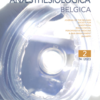Hemodynamic maintenance with norepinephrine in caesarean section under spinal anesthesia and its fetal outcome: a systematic review
Caesarean section, norepinephrine, neonatal outcome
Published online: Jun 30 2023
Abstract
Background: Postspinal hypotension is a frequent maternal complication in caesarean delivery under neuraxial anesthesia. Anesthesiologists have been using different vasopressors to maintain hemodynamics. Recent studies suggested beneficial effects of norepinephrine on maternal blood pressure and cardiac output, but little evidence exist on the neonatal outcome.
Objectives: This systematic review summarises recent evidence on neonatal outcome, such as umbilical arterial pH and base excess, after administration of norepinephrine during caesarean section.
Methods: A literature search on PubMed from 2010 to 2022 was performed and every article was reviewed on neonatal outcome, as primary endpoint and on maternal hemodynamics, as secondary endpoint. A total of 15 randomised controlled trials were included.
Results: Studies using a prophylactic infusion of norepinephrine show normal fetal blood gases. No evidence of fetal stress (pH < 7,20, base excess < -6) was assessed in the studies. Norepinephrine succeed in maintaining maternal hemodynamics. It is responsible for less bradycardia than phenylephrine and less tachycardia than ephedrine.
Conclusion: Our study suggests that norepinephrine, preferably as prophylactic infusion, is a safe vasopressor to prevent postspinal hypotension in caesarean section. No signs of fetal acidosis could be demonstrated in the recent studies.
